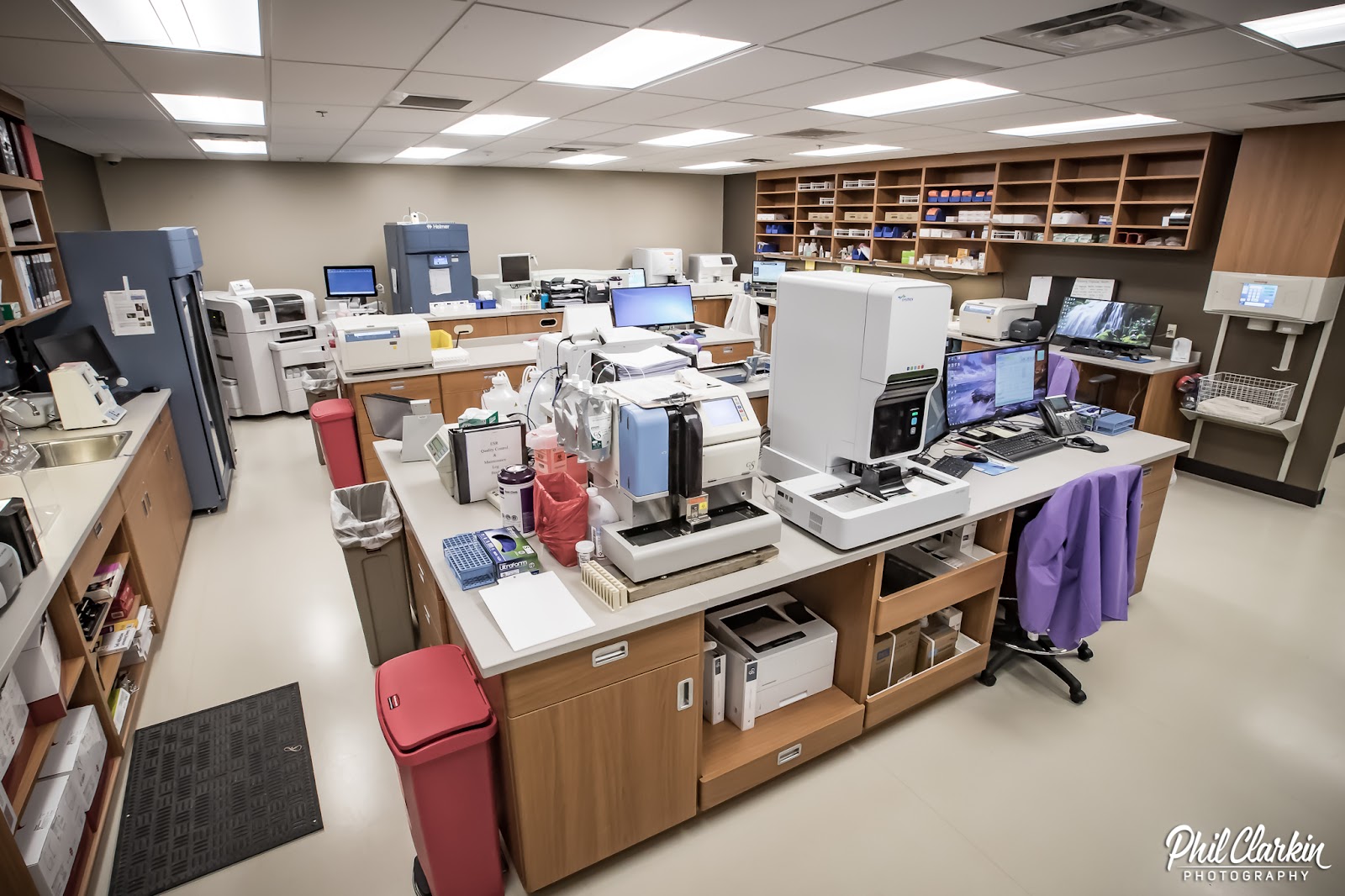5 Healthcare Casework Trends for Medical Supply Storage

As healthcare facilities continue to evolve, so too must their storage solutions!
When you think about it, storage has the potential to contribute to life-or-death situations in hospitals, pharmacies, laboratories, and other healthcare-related operations. These environments demand optimal casework to appease everything from legal requirements to patient experiences.
Any organization or business that provides medical services must be equipped with the latest storage solutions to ensure optimal efficiency and satisfaction. From advanced design solutions to smart technologies, the latest casework trends are revolutionizing how healthcare facilities manage their supplies and equipment.
Casework Trend #1: Install Modular Casework Systems
Modular casework systems have become a game-changer in healthcare storage solutions. Unlike traditional built-in cabinetry, modular systems offer both hospitals and pharmacies alike the flexibility and adaptability they need to thrive.
These casework systems can be easily reconfigured or expanded as the facility's needs change, making them ideal for growing practices or spaces that require frequent updates.
Design Example
More hospitals are implementing modular casework systems in their emergency departments. The ability to quickly reconfigure storage units allowed them to adapt to seasonal variations in patient volume and changes in the types of supplies needed.
- Design Implementation Tip: Start by assessing your facility's most dynamic areas. Modular systems are particularly beneficial in high-traffic zones where flexibility is crucial. Work with a supplier who can customize these systems to fit your exact needs and space constraints.

Casework Trend #2: Utilize Smart Storage Solutions
Smart storage solutions incorporate innovative technology to enhance the efficiency and security of medical supply storage. These systems often include features like RFID tagging, automated inventory management, and temperature control for sensitive supplies.
Design Example
A growing number of clinics are integrating RFID technology into their storage units. This allows staff to quickly locate specific items and reduces the time spent on inventory management. This not only improves efficiency but also ensures critical supplies are always on hand.
- Design Implementation Tip: When implementing smart storage solutions, ensure your staff is adequately trained on the new technology. Partner with a supplier who provides comprehensive training and support to maximize the benefits of these advanced systems.
Casework Trend #3: Explore Ergonomic Designs
Ergonomically designed casework is essential for reducing strain and increasing efficiency among healthcare workers. These designs prioritize easy access to supplies, minimizing the need for bending, reaching, or lifting heavy items.
Design Example
Rehabilitation centers are redesigning their supply storage based on ergonomic principles. By placing frequently used items at waist height and incorporating pull-out shelves, they are significantly reducing the risk of staff injuries and improving workflow efficiency.
- Design Implementation Tip: Conduct a workflow analysis to identify the most commonly accessed supplies and equipment. Design your casework to place these items within easy reach, and consider adjustable shelving to accommodate different users and needs.
Casework Trend # 4: Implement Infection Control Features
Infection control is a top priority in healthcare settings, and modern casework designs incorporate features to minimize the risk of contamination. These include easy-to-clean materials, antimicrobial surfaces, and touchless access systems.
Design Example
Pediatric hospitals continue installing antimicrobial casework in their patient rooms and surgical areas. Using non-porous materials and seamless designs made cleaning easier and reduced the potential for bacteria and virus transmission.
- Design Implementation Tip: Choose materials and finishes specifically designed for healthcare environments. Look for casework with smooth, non-porous surfaces and minimal seams or joints where bacteria can hide.

Casework Trend #5: Administer Integrated Technologies
Integrating technology directly into casework is a growing trend that enhances functionality and efficiency. This includes built-in charging stations for medical devices, integrated computer workstations, and smart locks for secure storage.
Design Example
Cardiac care units are integrating computer workstations into their casework systems. This allows healthcare providers to access patient records and manage inventory directly at the point of care, streamlining their operations and improving patient outcomes.
- Design Implementation Tip: Identify your facility's technological needs and consider how integrating these features into your casework can streamline operations. Work with a supplier who can provide customized solutions that match your specific requirements.
Custom Casework Solutions Courtesy of R.C. Smith
When it comes to your average healthcare facility, efficient and organized storage of medical supplies is crucial for ensuring smooth operations and high-quality patient care. With the medical field's ever-evolving needs and challenges, recent trends and innovations in healthcare casework are helping facilities meet their medical supply storage expectations more effectively.
By embracing trends like modular systems, smart storage, ergonomic design, infection control features, and integrated technology, facilities can enhance efficiency, improve patient care, and ensure the safety and well-being of their staff.
At R.C. Smith in Burnsville, Minnesota, we specialize in innovative healthcare casework solutions tailored to your facility's unique needs.
Contact us today to learn how our expertise can help you optimize your medical supply storage and improve your overall operations.
SOURCES: